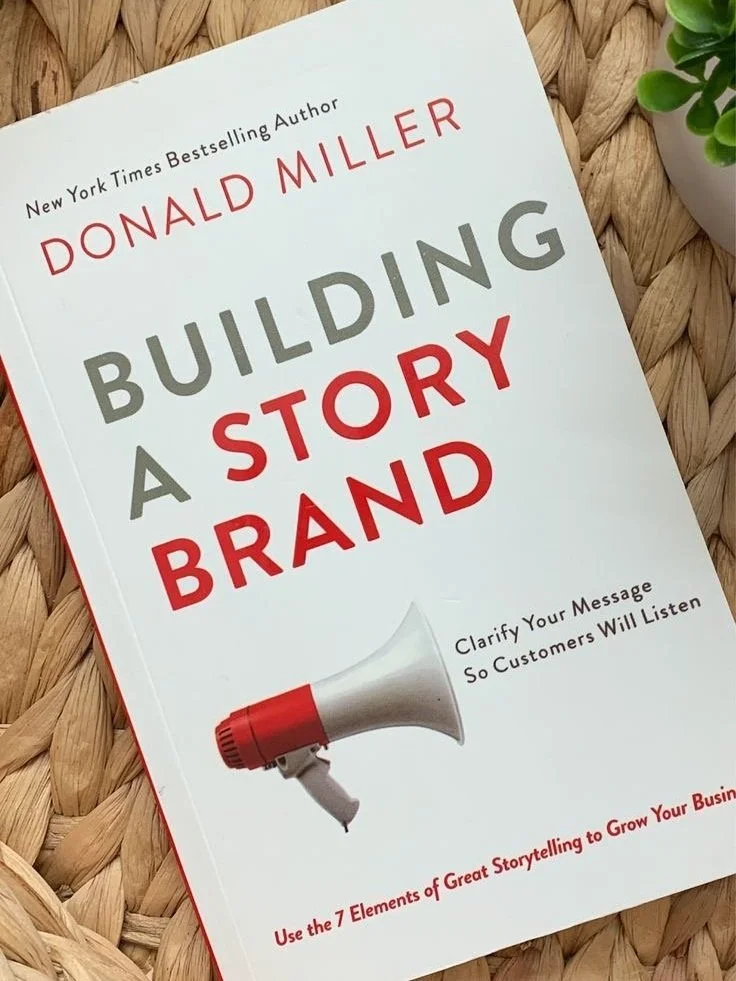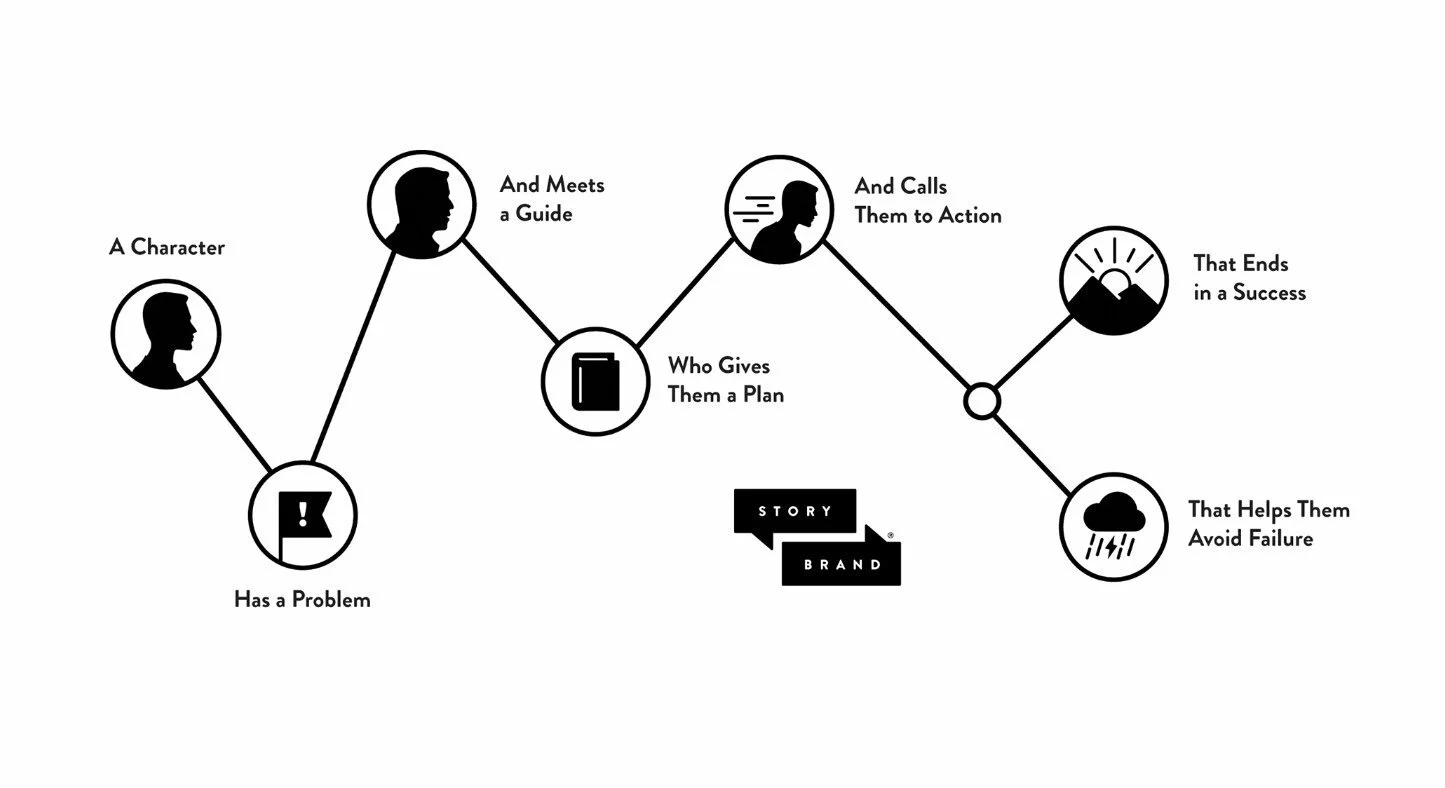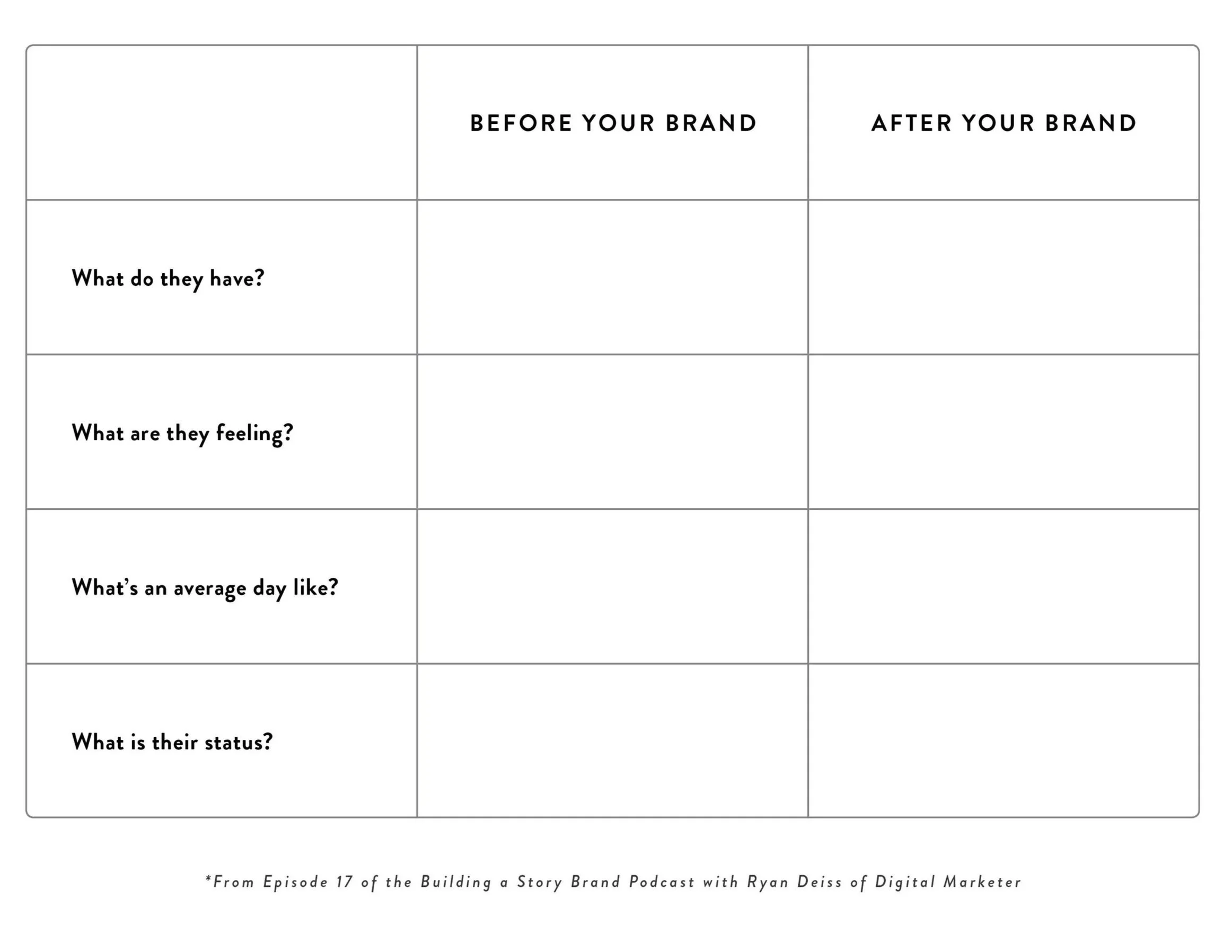
StoryBrand Book Club: Healthcare Perspective
March 22, 2024
This month our team came together to read “Building a StoryBrand” by Donald Miller, focussing on how to refine your brands message to optimal customer engagement and conversion. Applying Miller’s Framework to your healthcare company and creating a compelling narrative that resonates with your audience, motivating them to choose to improve health and well-being. In this blog post, we’ll explore sections one and two of Miller’s powerful book and demonstrate how his framework can be applied to your health care brand.
CHAPTER 1
Chapter one of Donald Miller’s “Building a StoryBrand” emphasizes the significance of a clear message for brands, which is crucial for healthcare companies. Simplifying your brand’s message is essential to ensure your audience understands your offerings without “burning too many calories”. Complex messaging can overwhelm customers, leading them to ignore important information.Therefore, it’s imperative for healthcare brands to focus on communicating how their services “help people survive and thrive”, addressing what truly matters to audiences.
CHAPTER 2
Chapter two highlights the importance of adopting a customer-centric approach. By identifying your target audience and understanding their pain points and needs, you can tailor your messaging to resonate with them effectively. Simplifying your marketing materials is crucial, this was highlighted by “The Grunt Test”, which ensures that customers can grasp your brand’s message within seconds. If a caveman could look at your website and answer all of these questions with a simple grunt then your marketing materials would pass this test and achieve clarity that resonates with your audience.
-
What do you offer?
-
How will it make my life better?
-
What do I need to do to buy it?
CHAPTER 3

In Chapter 3 of “Building a StoryBrand, Donald Miller introducing the “StoryBrand Framework”, this strategy is relevant for healthcare brands aiming to connect with their target audience and gain success. In this framework, customers are positioned as heroes, with your brand serving as a guide that helps them through their challenges. It is essential to address the internal problems of your audience, as customer look for solutions to these issues. As a healthcare brand, identify how you address these internal struggles. Position yourself as the trusted guide, like Yoda guiding Luke Skywalker in “Starwars”, by providing a clear plan of action and steps for their journey. By offering actionable advice and clear steps, your brand can build trust and empower your audience to avoid failure and end their story in success.
CHAPTER 4
In chapter four Miller highlights the importance of identifying your brand’s target audience and their core desires. By pinpointing a customers potential desire, you create a “story gap” that motivates engagement with your brand. It’s crucial for healthcare brands to focus on one main point related to customer survival, such as…
-
Conserving Money
-
Conserving Time
-
Building Relationships
-
Gaining Social Status
-
Accumulating Resources
-
Being Generous
-
Finding Meaning
By clarifying your brand’s direction and emphasizing the desires outcome for your customers, you can effectively guide them towards their goals, fostering trust and loyalty. “The goal for your branding should be that every customer should know where you want to take them.”
CHAPTER 5
In chapter 5 the importance of addressing your audience’s challenges was highlighted. By identifying and acknowledging these challenges, you deepen your audience’s engagement with your brand’s narrative. All good stories have a villain, and these challenges act as that villian in your story. Villains should possess certain characteristics, such as…
-
Is a root source
-
Is relatable
-
Is singular
-
Is real
By presenting your offerings “as the resolution to an external, internal, and philosophical problem and frame the “Buy Now” button as the action a customer must take to create closure in their story”, healthcare brands can compel their audience to take the desired action and move towards resolution.
CHAPTER 6
In chapter 6, Miller’s emphasis lies on brands assuming the role of the guide, a critical concept for healthcare companies seeking to connect with their customers. To position themselves effectively, brands but convey both empathy and authority. Empathy ensures that customers feel understood and valued, fostering a sense of connection. Meanwhile authority is established through various mean such as testimonials, statistics, awards, and logos, which serve as authoritative social proof to build trust and credibility. Making a strong first impression, particularly though high quality websites and branding, is essential in guiding the hero(customer) towards choosing your brans as their trusted guide on their journey.
CHAPTER 7
Chapter 7 emphasizes the importance of presenting a clear plan to customers. There are two types of plans that brands can present.
-
Process- A process plan aims to alleviating confusion, by laying out the steps that customers need to take to buy a product, use a product, or a mixture of both.
-
Agreement- An agreement plan focuses on alleviating fears, by listing agreements that brands make with their customers to help them overcome hesitations about doing business.
By implementing both types of plans, healthcare brands can provide clarity and assurance to customers, facilitating a smoother and more confident purchase experience.
CHAPTER 8
Chapter 8 brings light to the significance of calls to action. CTAs prompt customers to take specific actions, such as making a purchase of scheduling an appointment. Miller highlights two types of CTAs:
1. Direct
-
“Buy now”, “Schedule Appointment”, “Call Today”
-
“Something that leads to a sale, or at least the first step down a path, that leads to a sale.”
2. Transitional
-
“Free Information”, “Free Trial”, Samples
-
If the consumer is not ready to all in, this gives them the opportunity to get to know the offering/brand better
An great example of direct and transitional CTAs in healthcare is demonstrated by a doctor’s office providing patients with a healthcare checklist to complete while waiting for their appointment. Upon completion, the receptionist inputs the data into an email marketing system, triggering an automated campaign tailored to the patient’s needs. These emails offer free information on related health issues and encourage patients to schedule another appointment or make a call, thereby nurturing engagement and guiding them through the healthcare journey.
CHAPTER 9
Chapter 9 of “Building a StoryBrand” highlights the importance of helping customers avoid failure. By illustrating the consequences of not addressing healthcare needs effectively, such as worsening symptoms, decreased quality of life, or missed opportunities for early intervention and prevention, healthcare brands can leverage loss aversion to motive action. Emphasizing the urgency of addressing health concerns promptly and proactively can resonate with customers and encourage them to prioritize their well-being.

CHAPTER 10
Chapter 10 highlights the importance of portraying success in the customer’s story. By detailing how a client’s day will improve before and after engaging with your brand, you can effectively illustrate the positive impact on their lives. Understanding the changes your customers will experience after using your product or service provides valuable content for marketing materials, The main goal is to make sure you can show customers how your product of service can better their life.
CHAPTER 11
Chapter 11 of “Building a StoryBrand” emphasizes the innate desire for transformation and how your brand can facilitate this process. Beyond offering products and plans, your brand should aim to transform the hero’s identity, helping them become their best selves with your assistance. By positioning your healthcare offerings as catalysts for personal growth and improvement, you can deeply resonate with your audience and foster long-lasting connections built on the promise of positive transformation.
In conclusion, “Building a StoryBrand” by Donald Miller offers valuable insights for healthcare brands to refine their message and engage with their audience effectively. By simplifying messaging, identifying customer desires, and serving as a trusted guide, brands can inspire actions and drive success. Embracing Miller’s framework empowers healthcare companies to craft compelling narrative that resonates with their audience, fostering meaningful connections and driving positive transformation.